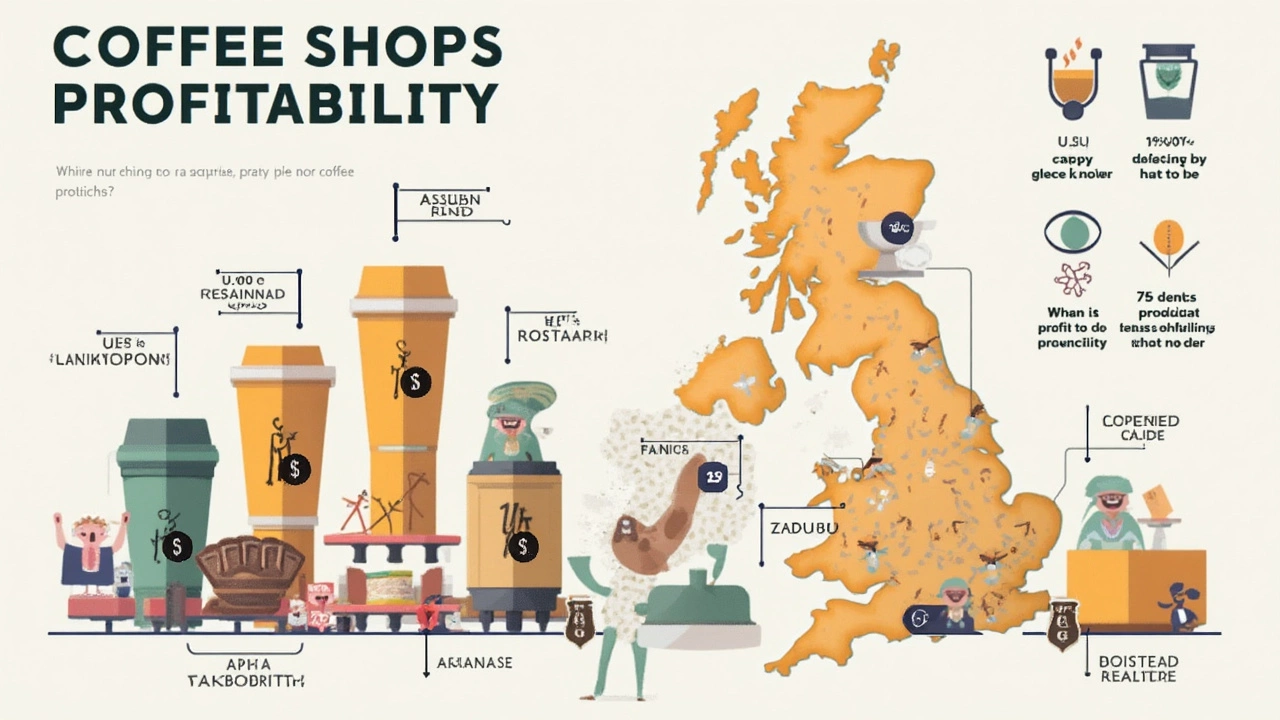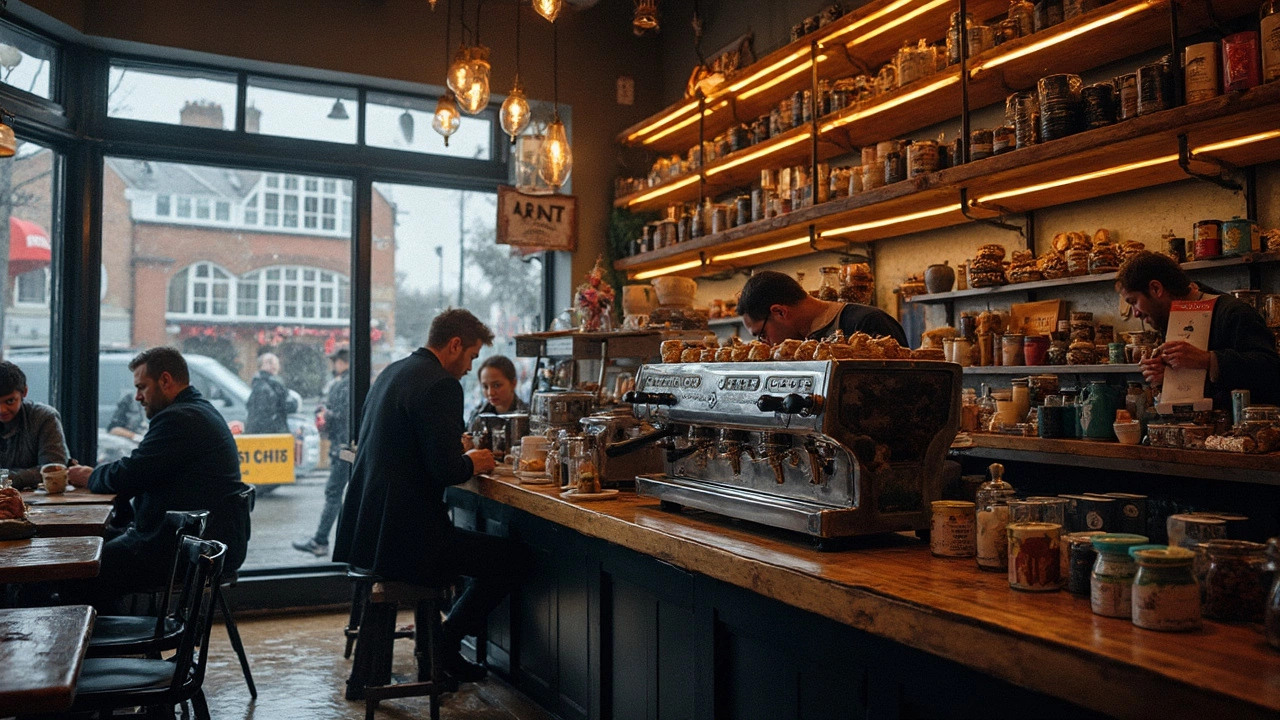Ever wondered what keeps the lights on in a coffee shop? You might think it’s the aromatic beans or the perfectly foamed milk, but there's more brewing underneath. The reality is, the espresso machine is often the golden goose. These machines aren’t just for eye candy—they're crucial for crafting those rich shots that have folks lining up at all hours.
But why is the espresso machine such a cash cow? Consider this: each espresso shot packs a punch in cost-effectiveness. You get high yields from small amounts of coffee, meaning more bang for your coffee buck. Plus, a good machine can churn out consistent quality, keeping loyal customers pouring in and profits steady.
Of course, it’s not just about the caffeine rush. Think beyond espresso. Even little things like serving pastries or having a killer ambiance might be padding your pockets more than you realize. Today, running a coffee shop isn’t just brewing—it's about understanding what aspects of your shop are silently turning the most profit.
- The Espresso Machine: Heart of the Shop
- Surprising Profit Boosters: Beyond Beans
- Investing Right: Balancing Cost and Quality
- The Customer Experience: More Than Just Coffee
The Espresso Machine: Heart of the Shop
Picture this: your coffee shop bustling with customers, each craving that aromatic pull of a perfectly brewed espresso. But what really keeps them coming back? It’s that powerful espresso machine sitting quietly behind the counter, getting the job done shot after shot. Think of it as the Formula 1 car of your shop—small but mighty, fast, and reliable.
Why is this machine often seen as the backbone of a successful coffee shop? Let’s break it down. First off, the magic of espresso comes from its efficiency. A top-tier machine can pull an impressive number of shots in an hour. This means serving more customers quickly, reducing wait times, and boosting daily sales.
Not all machines are created equal, though. A quality espresso machine will not only impact your efficiency but also the taste and consistency of the drinks. Consistency is key to keeping regulars happy. Investing in a high-quality coffee machine could be the difference between a thriving business and a struggling one.
Another important aspect is reliability. Frequent breakdowns can tank your sales, especially during peak hours. Choosing a reputable brand known for durability and easy maintenance should be a priority.
Here’s a little insider tip: while the initial investment for a professional-grade espresso machine might be sizable, it pays off in the long haul by reducing expenses related to repairs and replacements.
Not convinced? Check out this simple table illustrating potential shot output for typical machines:
| Machine Type | Shots Per Hour | Estimated Price |
|---|---|---|
| Basic Home Model | 30-50 | $500 - $1000 |
| Mid-range Commercial | 100-150 | $1,500 - $3,000 |
| High-end Professional | 200+ | $5,000 and up |
In your coffee shop, the espresso machine truly is the heart, pumping out not just coffee, but potential profit. Investing wisely in the right machine can set the tone for your entire business, boosting both efficiency and customer satisfaction.
Surprising Profit Boosters: Beyond Beans
Alright, let's spill the beans on what really boosts profits besides the obvious coffee. When it comes to a coffee shop, it's not all about the espresso shots and lattes. Oftentimes, the quieter heroes are snacks and pastries. Imagine this: a fresh croissant or muffin alongside that morning brew. It’s almost a no-brainer.
But why stop at food? Merchandise like mugs, bags of coffee beans, or branded gear can seriously add up. Customers love to take a piece of their favorite shop home, and this creates extra revenue streams. Coffee shops with a solid collection of branded items can find themselves pocketing a tidy sum by tapping into this desire. Plus, it’s basically free advertising every time someone uses their mug at work!
Adding on, have you considered hosting events? Think open mic nights or coffee workshops. Not only do they pull in new faces, but they often lead to extra purchases - people tend to stay longer and buy more meals or drinks. And let’s not forget the power of gadgets. Reliable wi-fi and power outlets make your shop a haven for remote workers and students. Keep them caffeinated and comfy, and they'll return with friends.
Here's a quick look at how these factors stand in terms of potential profitability:
| Item | Potential Profit Boost |
|---|---|
| Pastries & Snacks | 20-30% |
| Merchandise | 10-15% |
| Events & Workshops | 15-25% |
Keep this in mind: your shop is more than just a place to grab a cup of coffee. By diversifying what you offer, you not only boost profits but also deepen customer loyalty. And honestly, who doesn't like seeing their favorite local spot thrive?

Investing Right: Balancing Cost and Quality
Running a coffee shop is like riding a financial seesaw. On one end, you've got the need to invest in quality; on the other, there’s the pressure to keep costs in check. So, how do you get it right? Let's break it down.
First, think about your espresso machine. It might be tempting to go for a cheaper model to save some bucks initially. But that’s like buying a cheap car that costs more in repairs over time. A sturdy machine, though pricier upfront, often reduces maintenance costs and brews more consistently. This ensures customers keep coming back for that same great cup, and it also minimizes frustrations for your baristas.
Quality isn’t just about machines, though. Beans matter a lot too. Try to find a sweet spot between gourmet and cost-effective. Partner with local roasters who can provide quality while cutting down on shipping costs. You win by offering a fresh and unique taste profile that sets your shop apart from the big chains.
Here’s a thought: have a look at some numbers that can guide your choices. Investing about 20-30% of your startup capital in equipment is usually a smart move. But make sure that your chosen gear won't start dipping into your savings with hidden costs for upkeep and energy consumption.
Feeling adventurous? Consider offering other items that maximize margins, like for instance, artisanal teas or premium cold brews—these can be surprisingly profitable for the minimal extra investment they require.
And remember, every expense should in some way reflect in customer satisfaction. A high-quality environment might mean you can charge a little more per cup, making quality investments not just viable, but smart.
The Customer Experience: More Than Just Coffee
When it comes to running a successful coffee shop, it's not just about serving a tasty brew. It’s about creating an environment that feels like home away from home. Why? Because the customer experience can significantly drive profitability more than just the coffee alone.
Think about what draws you into your favorite coffee spot. Sure, the caffeine jolt is a must, but isn't it also the cozy atmosphere, friendly staff, and that playlist that seems to be tailored just for you? Many coffee aficionados stick around to soak up the ambiance—the vibe. A warm, inviting atmosphere can be just as crucial as the coffee itself.
Let’s break it down: offering free Wi-Fi can turn your place into a remote work haven. Encourage folks to linger longer, buying more over time. Some shops even schedule live music nights or poetry readings, allowing customers to share in a sense of community. It's these small tweaks that enhance the customer experience and have customers spoiling for a return visit.
Layout matters too. A well-thought-out setup with comfortable seating arrangements can coax more people in and keep them there. Plus, let's talk cleanliness. A tidy, clean shop is a huge draw. Nobody wants to enjoy their coffee in a mess!
And here's a tip: keep the lines moving. Slow service can kill customer satisfaction. Investing in efficient processes, either through faster coffee machines or well-trained staff, can keep things flowing smoothly.
All these elements, when combined, build more than just a place to grab coffee—they create a destination. And in this crowded market, that’s where the real money’s at.

